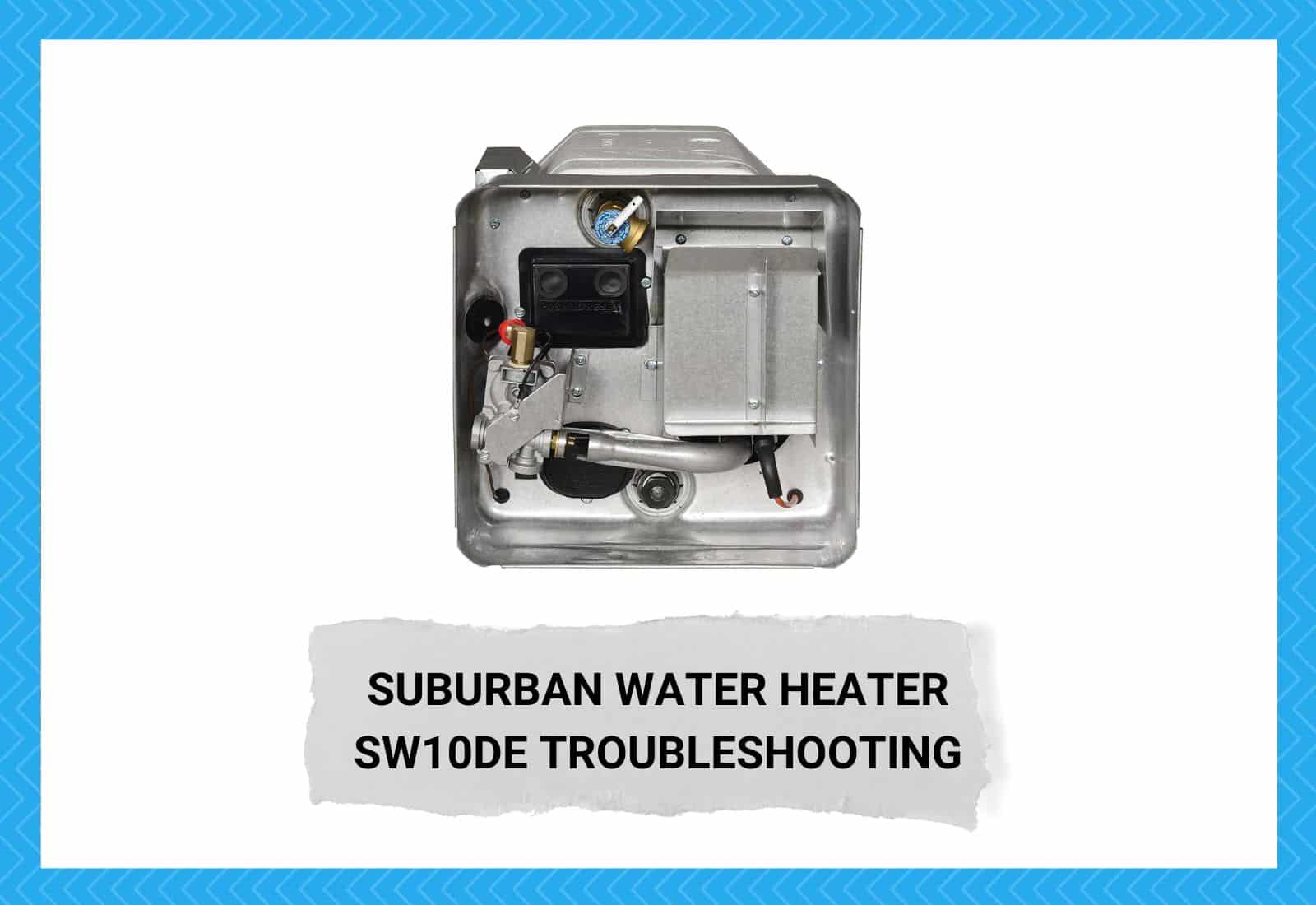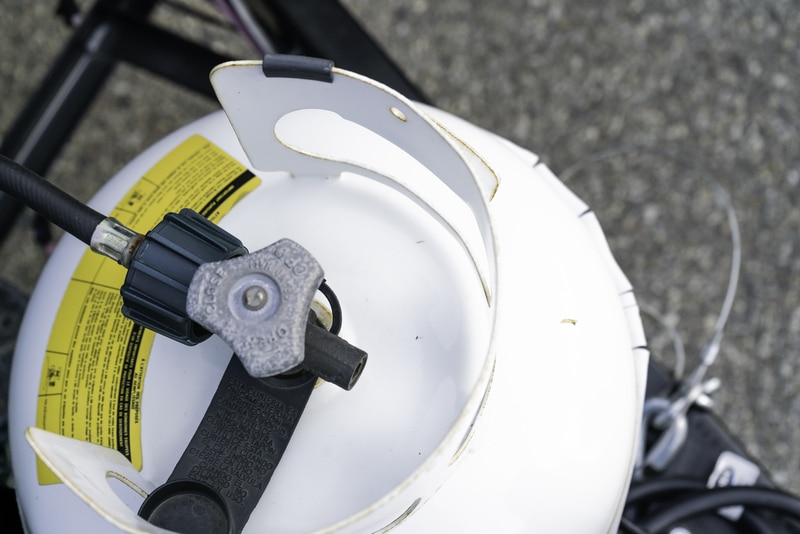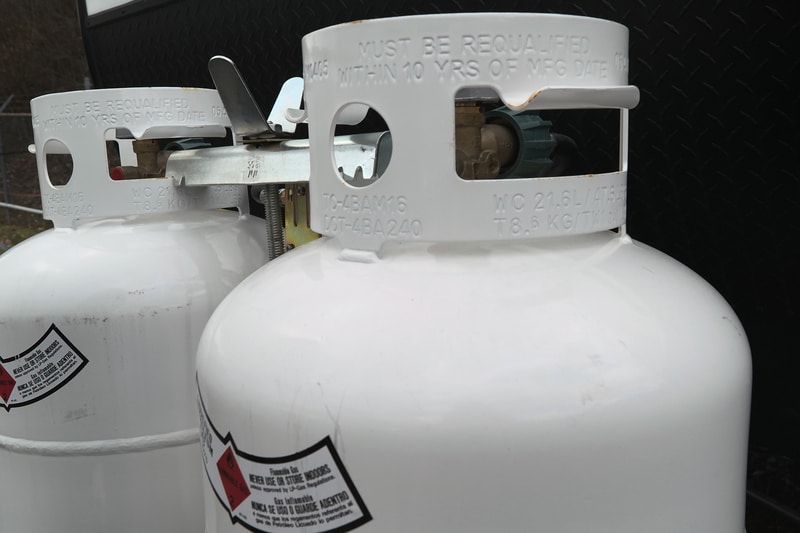
Introduction
Our modern lives necessitate an abundance of hot water on demand. This expectation is not limited to our homes but is now an expectation of our RVs too.
Fortunately, contemporary manufacturers have responded to this demand creating innovative water heating systems which have been expertly integrated into our mobile homes.
Suburban has been a frontrunner in the industry, creating top-of-the-line water heaters which easily supply our needs when RV adventuring. Unfortunately, these heaters can sometimes develop issues that can really put a dampener on any vacation.
Therefore this article will illustrate the most common issues associated with a Suburban water heater and how to troubleshoot and hopefully resolve the issues yourself.
Suburban Water Heater SW10DE
Without hot running water, it is difficult to imagine living in an RV for any length of time. Hence why manufacturers like Suburban have produced a range of water heaters designed deliberately for RV installations.
The ingenious systems have been devised so that you can utilize gas or electrical input to power the heating element.
In particular, the sw10de has been designed with a larger capacity storage tank in mind for RV owners who wish to function for more prolonged periods off the grid.
With a substantial 10-gallon capacity combined with two potential fuel sources, this truly is an ideal appliance for any RV
Suburban Water Heater SW10DE Troubleshooting
1. Keep Water Topped Up
Ensuring that you always top up the water in your Suburban heater is crucial for continued use. This is an essential detail whether it is fed directly from your onboard storage or separately at water-filling points.
The heater works by utilizing a metal element that is heated and subsequently heats up the water in the storage tank.
Critically, the element is designed to displace its heat into the water, which will naturally cool it during the process. If there is a lack of water in the tank, the element will get incredibly hot and essentially overheat.
If this happens, you will permanently disable the element that needs to be replaced.
The symptoms of this will be straightforward to identify. You will no doubt be aware when you turn the heater on. Therefore, you will be all too aware of your error when you realize there is no water available from your onboard taps or shower.
The best way to test if you have created this fault then you should turn the heater off for 30 minutes, fill it with water, and turn it back on. If the system functions as usual but fails to heat up, then you have identified the problem.
Frustratingly, this is one of the most common issues owners report, which is not protected under warranty. This is considered a user error and will not be replaced by Suburban, no matter how hard you try.
This is a crucial fault with the heater range as they need to be supplied with an effective low-water warning system that would prevent this common issue.
2. Electrical Fault
The Suburban Water Heater has two sources of power, electrical and gas. Owners generally mention that they utilize the electrical option for the majority of the time, and it should be noted that an electrical supply is still required when in gas mode.
Therefore, faults can often be attributed to some of the electrical componentry required to keep it running.
When your Suburban does not switch on, as usual, the next port of call should assess the electrical system. Firstly, assess if the control panel’s lights are turning on.
This is the most straightforward assessment to judge whether electrical energy passes into the heater. If not, then check to see if your other onboard electrical appliances, like lights, televisions, and AC, are operating as expected.
If they also fail to switch on, you either have low-power batteries or a significant connection issue that has disabled your entire electrical system.
If your onboard appliances are working as usual, then the electrical fault is isolated to the heater. Should this be the case, you should review your user manual to identify where the fuse is located for the heater. Then, find and replace it before assessing if the heater is back in working order.
If the problem remains, then you should check all of the electrical connections are secure. Use a multimeter to test whether all appropriate connections are receiving power.
If the reading drop below 10% of their recommended power, then you know there is an issue with a lack of power. At this point, getting a skilled professional to assess, diagnose, and fix this potentially hazardous and complex issue is better.
If you have an issue with the heater when you are using the gas system, then you should also consider an electrical fault. Even though it will not require a mains electrical supply, it will still need a 12V/24V supply from your battery to operate the control panel
If you notice that the control panel is blank during the gas mode, attempt to resolve it using the above methods.
Of course, you must be very careful when dealing with any electrical appliances, even at low voltage. If you are not a qualified technician, you should refrain from touching or dealing with any of the electrical issues and employ an electrical technician to resolve these issues for you.
3. Propane Pressure
When the SW10DE is in gas operation mode, it requires an appropriate level of pressure for it to function adequately. Should the pressure drop below 11 Column Inches, the heater will fail to function.
The issue with this is that checking the propane pressure requires some very specialized equipment. It is also generally not recommended that someone without gas handling certification check the level because of the dangerous implications.
However, there are some more simple techniques you can implement as a means of testing the propane pressure without tools.
Typically, if you have a water heating system on board, then you will have a large propane tank installed, which will most likely be used for other devices in your RV.
Most often, this means that the same tank powers your stove. Therefore, you should attempt to turn on all of the burners at once and confirm that they all light as standard. Also, ensure that it produces exclusively blue flames, as orange ones indicate low propane levels.
Additionally, you can employ the same check on other appliances which are fed from the same supply as the water heater.
Often onboard furnaces are used to heat the RV, which often requires around the same pressure as the water heater to function. If it fails to operate, then you can be reasonably confident that a lack of pressure is the problem.
Although these tests are not definitive, they can be a very good representation of the level of propane pressure. Should the other appliances work as expected, then it is unlikely to be the cause of the malfunction.
4. Propane Rate of Flow
If you complete the propane pressure checks and confirm that other propane fuel appliances are operating as usual, then you should consider the propane rate of flow.
Several mechanisms are in place for the propane to flow optimally and potentially compromise the heater’s function should they fail.
Firstly there could be that the tank’s gas release valve is opening too quickly during its initial start-up procedure. This is because a sharp initial burst can trip the overflow protection sensor, which will automatically block any additional flow as a safety precaution.
To rectify this, you can shut off the gas valve and re-open it very slowly, resetting the overflow device and allowing for continuous flow at a regular rate.
Your propane storage will often consist of two or more tanks linked together to maximize your storage capacity.
However, this can be the source of propane flow rate issues. Utilizing multiple tanks requires an auto changeover regulator, which offers seamless tank changeovers when the pressure in one tank drops below a particular pressure.
To confirm this source, you can disconnect the autochanger and fit the high-pressure pigtail line to one of the tanks. If you restart the system and it works as expected, you have a faulty changer that needs replacing.
If you begin to smell propane gas at any point, you should immediately shut off the gas supply. There are several techniques you can employ to identify and resolve basic issues. However, you must never forget that flammable gas is hazardous and must be treated cautiously.
Conclusion
Like any modern appliance, it can and will develop issues from time to time. Regardless of the impeccable reputation of the Suburban water heater SW10DE, there are still common problems that have been associated with the model.
Although they are remarkable machines that are highly versatile, they still have to operate in demanding environments associated with RV traveling.
Reviewing this article will give you the necessary information to deal with the most common issues associated with the model and how to rectify them. Should you have any more severe or ongoing issues, you should contact a professional who is experienced in dealing with RVs.




I need some expert advice and assistance. Recently my plumbing and gas fitting company purchased the Suburban SW6DERA Hot Water System 20.3L GAS/12V/240V (not sure who the supplier was) and installed it.
I notice there was intermittedly water leaking from the pressure relieve valve and dripping inside the heater back compartment. Is this normal for these heaters having water dripping inside the heater? If this is the case, why is there no outlet for the water to drain out, instead inside the compartment?